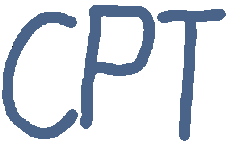
|
Calendar of Physics Talks Vienna
| Modelling Heavy-Ion LHC Experiments as black hole collisions in AdS5 |
| Speaker: | Paul Romatschke (University of Colorado) |
| Abstract: | Nuclear Collisions may be modelled as a strong-coupling QFT problem
using the AdS/CFT correspondence. This has the advantage of being able
to follow the full dynamics of the energy-stress tensor exactly
(albeit numerically) by solving five dimensional Einstein Equations.
Performing such a calculation, including matching to hydrodynamics and
a late-stage hadronic afterburner for central nuclear collisions at
the LHC results in a almost 'parameter-free' prediction for the
particle spectra which happens to coincide with available experimental
results from ALICE. I will discuss advantages and shortcomings of the
strong coupling approach to nuclear collisions.
|
| Date: | Mon, 05.05.2014 |
| Time: | 14:00 |
| Location: | Inst. f. Theoret. Physik, TU Wien, SEM136, 10.OG, Wiedner Hauptstr. 8-10 |
| Contact: | Anton Rebhan |
| Euclidean QFT III - Vertex Algebras |
| Speaker: | Jan Schlemmer (Univ. Wien) |
| Abstract: | im Rahmen des Seminars für Mathematische Physik |
| Date: | Tue, 06.05.2014 |
| Time: | 14:15 |
| Duration: | 60 min |
| Location: | Fakultät für Physik, Erwin-Schrödinger-Hörsaal, Boltzmanngasse 5, 5. Stock |
| Contact: | J. Yngvason, J. Schlemmer |
| Silver Linings from Flavor Physics: The B->K*mu mu Anomaly |
| Speaker: | Javier Virto (Univ. Siegen) |
| Abstract: | im Rahmen des Teilchenphysikseminars |
| Date: | Tue, 06.05.2014 |
| Time: | 16:15 |
| Duration: | 60 min |
| Location: | Fakultät für Physik, Erwin-Schrödinger-Hörsaal, Boltzmanngasse 5, 5. Stock |
| Contact: | A. Hoang, V. Mateu |
| Rolling without slipping or twisting. A few surprises |
| Speaker: | Pawel Nurowski (Warsaw) |
| Abstract: | im Rahmen des Literaturseminars für Gravitationsphysik |
| Date: | Thu, 08.05.2014 |
| Time: | 14:00 |
| Duration: | 60 min |
| Location: | Arbeitsgruppe Gravitation, Währinger Strasse 17, Seminarraum A, 2. Stock, 1090 Wien |
| Contact: | P.T. Chrusciel |
| The semi-holographic framework - applications to non-Fermi liquids and heavy ion collisions |
| Speaker: | Ayan Mukhopadhyay (Ecole Polytechnique, CPHT & IPhT, Saclay) |
| Abstract: | We will introduce the semi-holographic framework which can replace the usual effective field theories for modelling strongly interacting
systems, both at and near a critical point. In this framework, universality of physical observables in certain limits will not be important as in the traditional purely holographic models. Rather the crucial prediction will be that all phenomenological observables can be determined by finitely few parameters, whose microscopic definitions should be known in principle, although calculating them exactly will not be necessary to test the theory. A finite number of measurements can be done to fix these effective parameters, and then the remaining observables will be predicted uniquely as functions of these parameters. Using this framework, we will generalise Landau's theory to non-Fermi liquids both at zero and finite temperature. We will see that the strange metallic behaviour is far more generic than purely holographic approaches. We will also present a semi-holographic model for heavy ion collisions with three effective parameters and show that its predictions could be different from purely holographic approaches. |
| Date: | Thu, 08.05.2014 |
| Time: | 16:00 |
| Duration: | 60 min |
| Location: | SEM 136 (Freihaus, Wiedner Hauptstrasse 8-10), Institute for Theoretical Physics, Vienna University of Technology |
| Contact: | Daniel Grumiller and Johanna Knapp |
| Phase transitions in the Kuramoto model |
| Speaker: | Maximilian Sadilek |
| Abstract: | im Rahmen der gemeinsam veranstalteten Seminare "Komplexe Stochastische Systeme" (Univ.Wien) und "Analyse Komplexer Systeme" (Med.Univ.Wien) |
| Date: | Fri, 09.05.2014 |
| Time: | 14:15 |
| Duration: | 90 min |
| Location: | Medizinische Univ. Wien, Informatikbibliothek, CeMSIIS; Bauteil 88, E03, Spitalgasse 23 |
| Contact: | H. Hüffel und Stefan Thurner |
|
